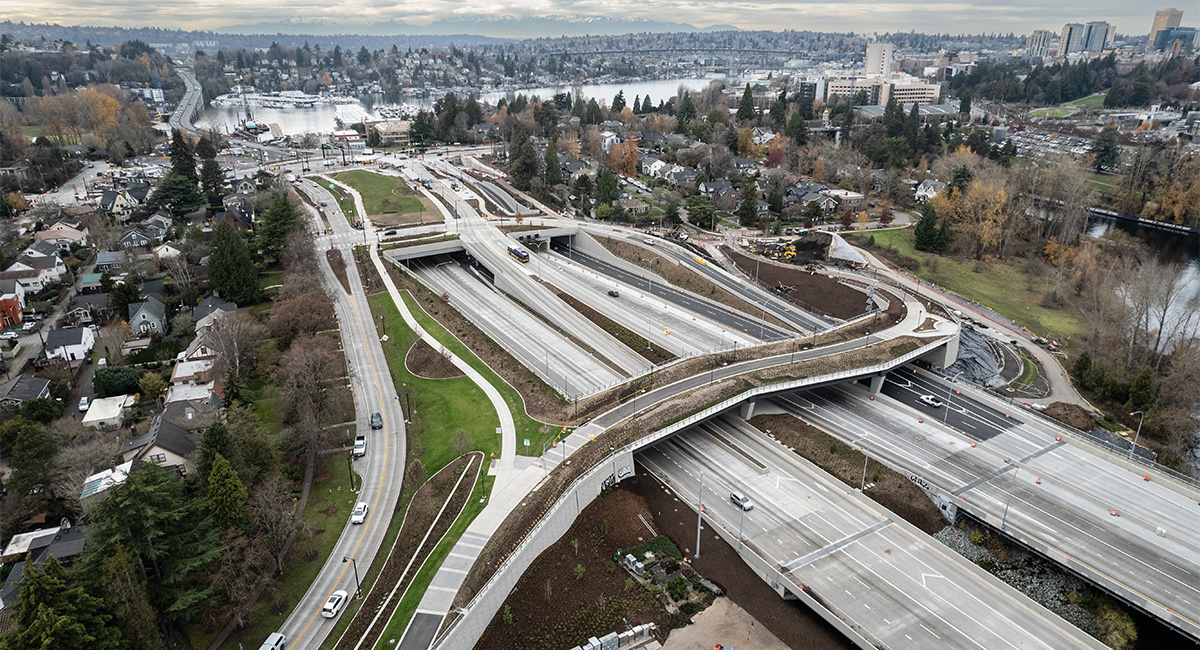
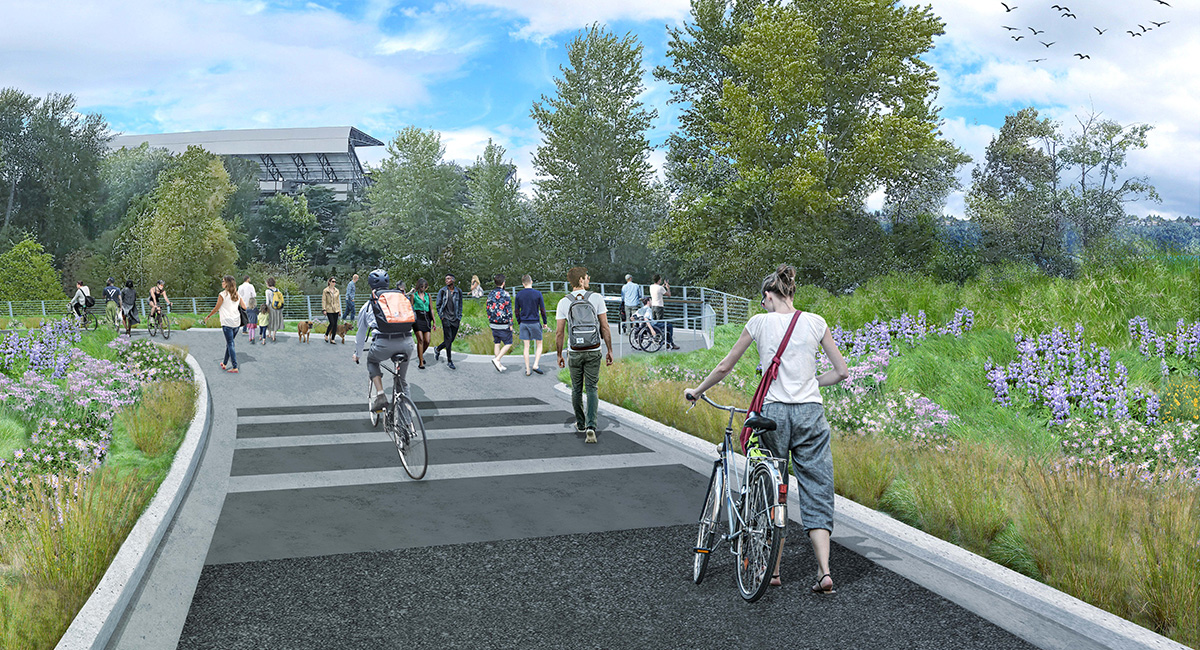
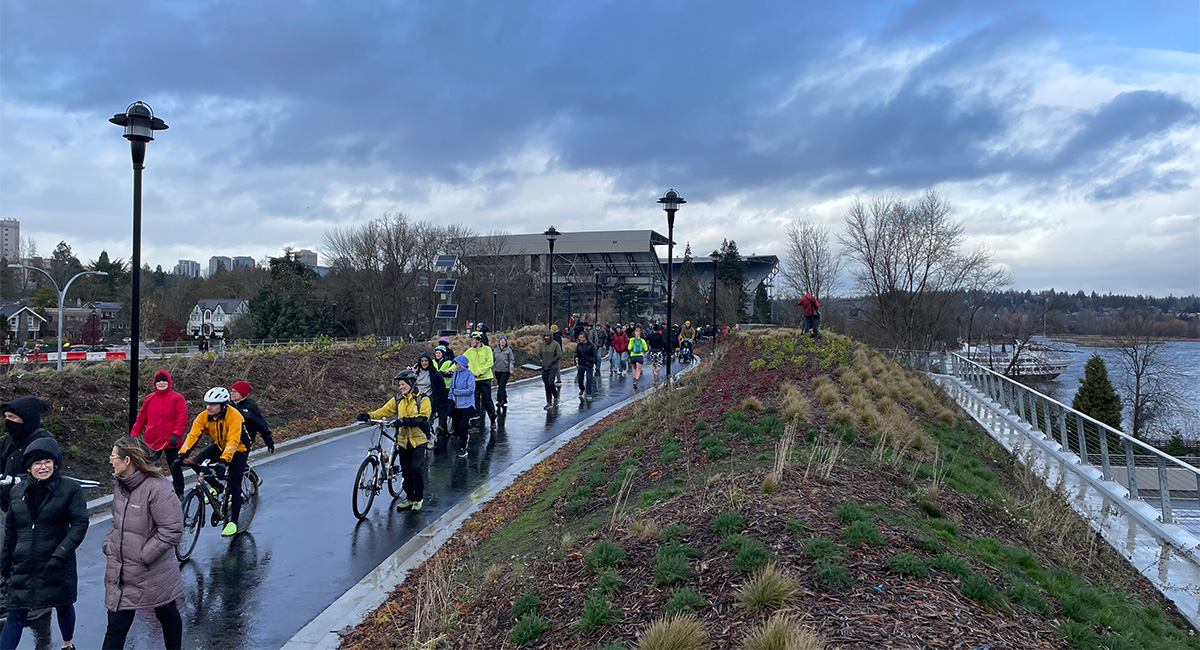
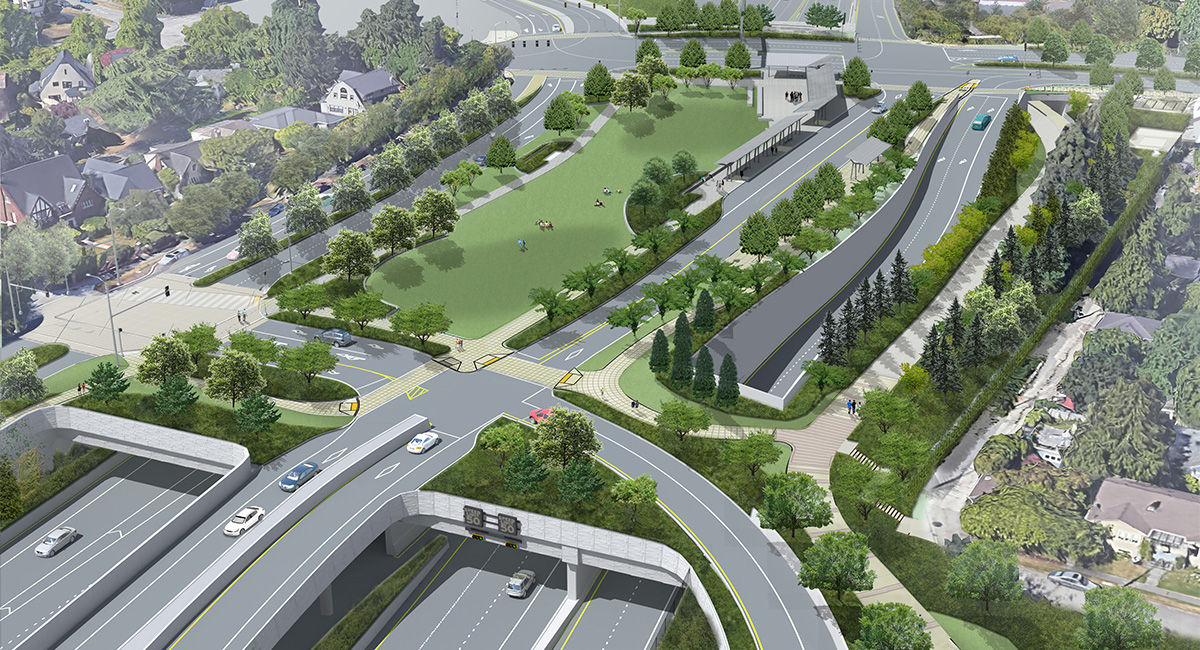
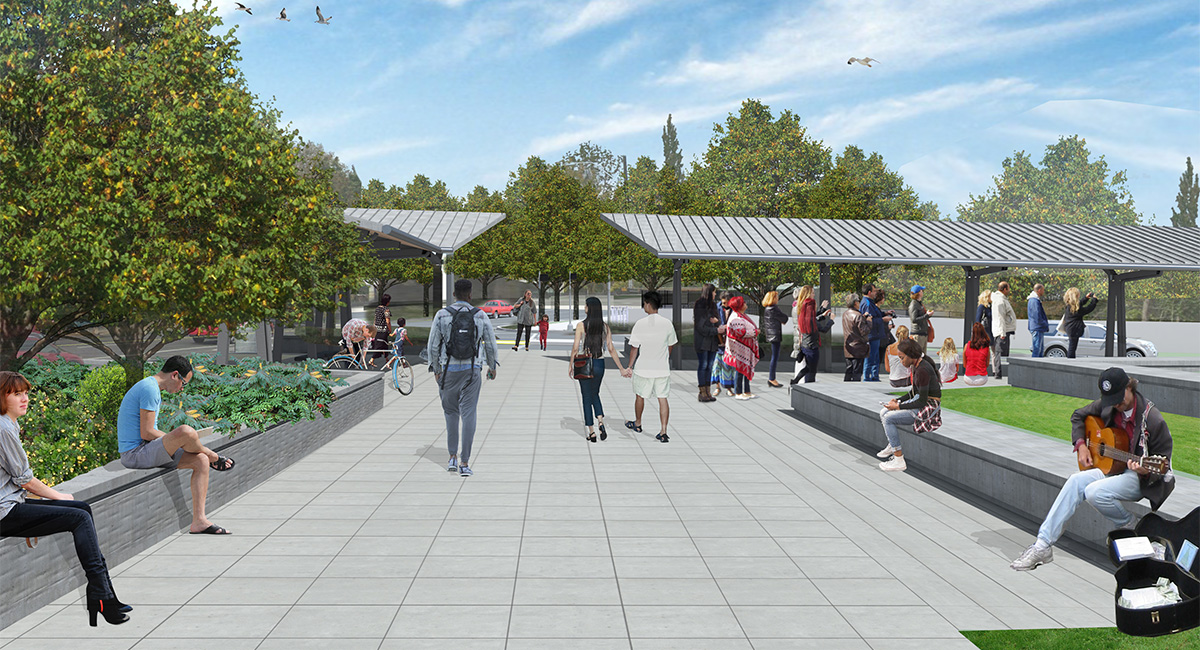
Washington State Route 520 Montlake Project
The Washington State Route 520 (SR520) Montlake Project is a critical segment of the six-mile east-west corridor connecting Interstate 405 in Bellevue to Interstate 5 in Seattle. Tens of thousands travel this corridor daily and the Washington State Department of Transportation (WSDOT) has been replacing this vital urban highway’s aging and structurally vulnerable bridges in a phased, multibillion-dollar “megaprogram.”
MIG has been integral to the project from early planning in 2013 as the design was developed for this first project in WSDOT’s “Rest of the West” phase of the overall SR520 Bridge Replacement and HOV Program.
Replacing the Montlake section was a controversial undertaking. MIG helped bring stakeholders together to collaborate on a revised design that met the City’s vision for an “entry experience.” The design they developed improved non-motorized connections and open space within the construction’s constraints, reducing cost, time and risk. The final recommended design served as the foundation for the project’s design-build contract.
As part of the design-build team since 2018, MIG led the final design for landscape architecture, architecture and urban design elements, and coordinated with WSDOT, multiple City of Seattle agencies, and King County Metro to support the construction of this $455 million project. In addition to satisfying multiple stakeholders, MIG developed a finished design approach to accommodate an intricate network of water, power, sewer, electrical and telecommunications lines that crisscross the site in its final configuration.
With construction complete in 2025, the project will enhance public safety and mobility with a seismically stronger structure featuring a dedicated HOV/transit lane, a three-acre landscaped lid over the highway, and a separate pedestrian/bicycle land bridge. MIG’s design of the lid as a green open space will also help restore the neighborhood fabric from when the highway was first built in the early 1960s. It provides improved pedestrian, bicycle, transit and auto connections within the neighborhood as well as to the rest of the City, particularly north-south access from the University of Washington to Washington Park Arboretum.
